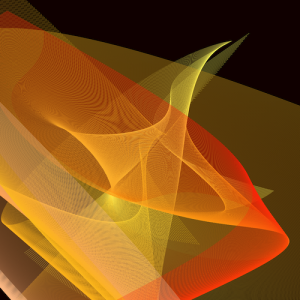It’s probably worth pointing out at the get-go that I have never used openframeworks, and as such I have very little knowledge about what half of these addons are even capable of. So here is my hand-wavy, blue-sky assessment of what I think looks interesting.
ofxPXCU ⇣
by IntelPerceptual
openFrameworks addon for Intel’s Perceptual Computing SDK (PXCUPipeline) [view on Github]
The thing that drew me to this add-on was the fact that Intel’s Perceptual Computing SDK apparently supports Nuance Language Processing. Having worked with some of the Nuance people and seen their speech to text programs in action in high-pressure situations (like electronic medical record generation), I’d love the opportunity to experiment with it in my personal projects.
Consider: a program where two people talk into a microphone on separate occasions and tell a short story of their own making (or maybe two versions of the same ‘truth’). The program merges their tales into a new, third story by looking at the sentences and substituting clauses or appropriate parts of speech. Like mad-libs, only more fluid, and actually blending full sentences into each other rather than just filling in blanks.
ofxFern ⇣
by ofTheo
An implementatin of the Fern tracker from EPFL CVLab [view on Github]
This is sort of cheating, since we watched the ‘magic book’ demo in class on Monday, but I fell madly in love with that project, so here I am. I feel like this addon would help me take the next step in a project I began last semester in Sequential Visual Narrative. There, I created a set of photographs of objects which told a fictional story. An evidence form was attached to each photo, which had been filled out by one of the characters in the story: a police detective. The aim of the game was to piece together what was going on in the larger narrative based solely on the artifacts the detective had amassed, and his very biased opinions about them.
When I saw what the Fern tracker was capable of doing, I immediately wondered what other secrets I could hide within those photographs. Maybe in addition to the detective’s written narratives, the Fern tracker would reveal the history of the object —hidden poems from the owner, memories, daydreams, promises… Maybe tilting the photograph would reveal a fingerprint, or a monogram … Maybe tilting the camera in different directions would reveal the opinion of a different character…
ofxTesseract ⇣
by kylemcdonald
tesseract-ocr wrapper for openFrameworks [view on Github]
My thoughts on this addon are similar to the previous two, but harnessing Tesseract could give me the ability to interact with printed text, and once I have the text, I could do any number of language processing activities with it, illustrate it, re-format it, translate it, or just use it as a data set.
Words, words, words!


